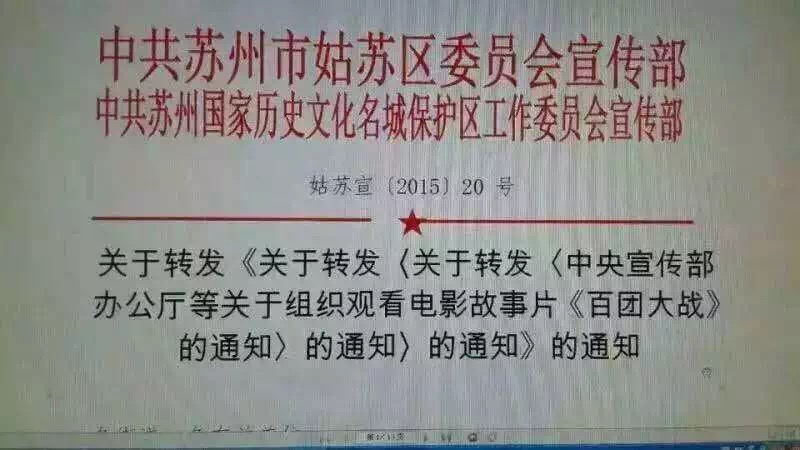董:
冯老师,姜博士,李维,白硕,宋柔老师,这个系统正式上线前,想先请各位看看,横挑鼻子竖挑眼。这个系统是去年6月开始开发的。时间短。最近几个月更是忙得厉害
李:
刚发朋友圈了。“中国nlp老前辈董老师的知网支持的平台 值得关注 推荐。世界上自然语言理解的深度 董老师是最深的了。逻辑语义的开创者。三十多年的智慧和知识积累 董振东老师是 让我辈高山仰止的语义巨人(见 科学网《语义三巨人》 )。【语知科技】多语种NLP平台正式上线。 demo.keenage.com
冯:
董老师,语义理解,还是要依靠规则。深度学习不行!
李:

Manning 教授昨天座谈时说 最近三年是他一辈子做nlp感觉进步最大的三年 他主要指的是深度学习。曼宁是一位一直强调语言结构和理解的老教授 NLP最知名的权威了。他的感受应该是真切的 不过来不及细问他 这种感受多大程度上是基于深度学习在语音处理以及mt方面的突破性进展,文本方面其实目前很难说深度学习引发了革命。不过 word embedding 还有什么 adversary 学习方面 开始在词汇语义级发力 有些结果令人印象深刻。parsing 要等到深度学习能把 parsing 落地为应用 才值得侧目以待 目前不行。曼宁教授还是很学究 甚至有些腼腆的气质 现在火得不得了 也是时势使然。ai 一热 nlp 就热。病急多投医,nlp各路 也跟着提升了在ai中的地位,I guess。
董:
@李,你说的让我脸红了。我在研究上是个工匠,做学问认死理。我研究语义,是叫当年的机器翻译研究逼出来的。什么是理解?什么是常识?什么是知识库?人的知识是如何建构的?我后来的感觉人是用“少”,而非用“多”来计算语义的。你常说起的Cyc,是“多”的典型。语义的关键是“关系”,而分类只是语义关系的一种。近年我们开发了基于知网的翻译,最近一年开发了中文分析,从学术的观点看,是为了考验知网,是为了给自己30年前的设想做个交代。这个交代既是给自己的,也是给别人的。告诉人们哪些努力是值得的,哪些努力是仍然无法圆满成功的。
李:
董老师退而不休 能够完成心愿 给我们留下的这笔知识财富 我们需要时间咀嚼 消化 但我坚信这种影响是深远的。潮起潮落 有些东西是不变的。语义及其语义研究的一些方法 具有相对恒定的价值 好比金子 总会发光 这个没有疑问。ai 中真正懂 nlp 特别是 nlu 的人不多,好多声称nlp的专家 只是做过自然语言的某个端对端的应用 专家做 text NLP与他做Visual 做 audio 做生物DNA 是一样的路数和算法,不过是数据不同而已。没有啥语言学。
白:
佩服董老师的执着和务实。如果说哪里还差点什么,就是对于“多个爹”的刻画机制问题。
董:
白硕说的对。“多个爹”是我们想做的新的探讨。两个问题我们遇到的:一是“是不是个“爹””,如何在文句中正确的确定那个“爹”。
冯:
有的作自然语言理解的人不关心语言学。词向量效果不错,理论机制不清楚。
李:
戏不够 词来凑。语言的分析理解主要有两个支柱,一个是词汇 吕先生称为珍珠;一个是结构 称为串子。传统说法是没有串子 做不了语言理解的项链。
白:
@冯志伟 词向量是保运算的降维,数学上是清楚的,但是跟理解搭不上钩。
李:
所以我们这些擅长 deep parsing 的人就开始看不起只看到珍珠的人,但是 其实二者的 overlapping,从完成nlp任务的角度 作为两种证据源 其实是相当地大。因此善于把 词模型 词向量模型用到极致的人,有时候的确产生了让我们意想不到的结果。
冯:
珍珠和串子是缺一不可的!
白:
如果每颗珍珠都有插销插座,确实可以不用串子。或者说,寓串子于珍珠之中。
李:
我的意思是 我们多少有些老古董了。虽然可以继续执着下去 也的确可看到一些我们擅长的nlu工作 词模型似乎根本就没有可能赶上来。但还是应该保持一种 open 心态。
白:
开开脑洞还是必要的。
词负载结构是好东西。
冯:
我们要关注词向量的成果,更要问一个为什么?
李:
对 应该探究这种表达的背后。
白:
设想回到老乔刚冒泡的年代,那时的语言学家怎么看老乔?
李:
其实我最早读乔姆斯基的转换生成语法的介绍的时候,非常看不起,觉得就是儿戏。那还是在 1982 年备考语言研究所刘老师的机器翻译研究生的时候不得不临时抱佛脚,了解一些计算语言学的基本概念。此前我做过英语教学多年(包括插队做民办教师),从中学做学生的时代就教别人的英语句法分析,主动语态被动语态等转换烂熟于心。觉得老乔演示的那些转换生成案例,太低级 太常识 太机械 乏味,太不具有神秘感。直到后来学形式语言理论 才生出崇拜感。
白:
说实话,如果知识结构跟不上老乔,恐怕根本没有跟老乔PK过招的可能。
李:
人岁数大以后的一个好处是,可以直抒己见,没有啥顾忌。我其实在读博士做汉语形式研究的时候,就对乔老爷的句法独立句法自足论极为不满,就在 seminar 指出乔老爷错了,离开语义,汉语句法形式分析搞不定。被我的导师劈头盖脸一顿轻蔑,大意是:你不知道天高地厚,一边去。被哑口很多年过去,我还是发扬光大了当年的批判。
冯:
我在57年读到乔的三个模型就开始崇拜他了!
李:
是啊,一个理论把自然语言与电脑语言形式上统一起来,使得电脑语言编译越来越像语言学,这种抽象让人震撼。震撼过后的很多年 就是对乔老爷的不断扬弃和批判,批判的主要点还是源于他的抽象:是赞也抽象,批也抽象。的确 他把电脑语言带进了语言学,居功至伟 。同时他也把自然语言带进了坑里面,误导了太多的人 整整一代人。(详见:《立委:乔姆斯基批判》 )。
白:
@wei 你那不算是语言学的批判,只是工程视角的批判。他是语言学家,但从未承诺过NLP什么。NLP掉坑里也是自作多情
李:
我们下意识还是 认定他应该引领nlp 和 cl,结果是他越走越远 越走越邪门,nlp 已然与他无关了。
白:
他不管工程,不管技术,只管数学。
李:
结构分析中的叠床架屋 使得过程中夹杂了太多的 assumptions,看上去高度抽象 追求共性 实际上是越来越像空中楼阁。当然 我肯定戴了有色眼镜,做了一辈子nlp 对纯语言学很难批评得中肯 只是一种感觉而已。老乔的语言学 对于绝大多数NLP践行者包括在下,都是供在菩萨庙里面的 只膜拜 不 follow。
白:
如果从工程角度批判,估计人家看都不看----关我什么事。
李:
老乔的思维高度自然不看 也不用看 这种批判。但是老乔下面的语言学家我认识很多,我就是这堆人里面混出来的,从他们身上我能感觉到他误导的后果。这些人很多时候就是在老乔的框架里面 自己跟自己玩游戏 没有理论创新 只好在语言数据上玩游戏,而且是一点都不感觉高明的游戏。说的是一批 或一大批语言学家。(也有一些绝顶聪明的纯语言学家让我叹服的,为数极少。)
洪:
做计算机编译的,没人认为老乔误导 Knuth和老乔貌是惺惺相惜。
吕:
赞@wei , 很多看法深有同感
李:
编译的理论基础 编译的祖师爷,电脑界理应崇拜 给10个图灵奖也不过分。当然 乔老爷哪里在意什么图灵奖。@吕正东 有机会咱俩坐下来谈。你最近的大作(见 独家|专访深度好奇创始人吕正东:通向理解之路)中我最不满意的就是一句话:说什么 符号逻辑规则路线没有成功的(大意,查原文是:“这三点都导致至今没有成功的规则系统”)。我得让你见识一下符号系统,没有深度学习的任何一家目前可以做到这个NLU的,无论深度 广度 速度 鲁棒 迁移度 可行性 还是其他指标 (It is untrue that Google SyntaxNet is the "world’s most accurate parser)。
吕:
@wei 惭愧,改日一定当面请教。
白:
说这些其实是在以史为镜。今天语言学界看DL、看词向量的心态,跟当初老语言学界看老乔的心态,有没有几分相似?
吕:
我的意思是说规则系统很难做到我所期望的NLU,不是说现在最好的规则系统弱于DL的系统。当然我对规则系统确实了解不够(现在正在补课),不免贻笑方家。
李:
不知道你去期望是什么。如果期望是现实的,很可能已经接近你的期望,如果期望是科幻,不谈。开玩笑了。王婆卖瓜而已。
吕:
我那篇访谈其实更多的是反对generic DL system 搞定一切的天真想法...
董:
@吕正东 你所期望的NLU,能否举个例子。
白:
里面有些模块可以是神经的,这有啥。
李:
所以我说我其实只有一点不满。你的访谈很好,
吕:
当然是现实的... 我们有现实的语义理解的项目
李:
@白硕 前乔姆斯基时代的老语言学界,陷入了田野工作的泥坑,是老乔把他们带出来的,革命了这个领域。纯粹的田野工作的确也是没大意思 比码农好不到哪里去。
吕:
@董振东 董老师,比如从一个偏口语的对事件的描述中得到对该事件的(“法律相关”)事实的表示.... , 当然这个定义是不那么严谨的
白:
其中一些方法,包括《降临》主角跟外星人沟通并试图破译其语言的一些方法,其实和主动机器学习很像了。
李:
一辈子也常陷入事务主义 没完没了地田野作业 自得其乐,但好在自我感觉好像心里还有某种哲学的俯视。有如神授:在田野工作的间歇 在某个高远的所在 有指引着道路。我是 语言工程师 knowledge engineer 的一员 毫无疑问。而且90%的时间都是。但是一辈子感觉这些田野作业的乐趣的本源却不在田野,而是在于架构。所以自我定义为架构师是最感觉自豪和 job satisfaction 的所在,否则与一头驴有啥区别。
白:
就是说,理想的田野工作一定是遵循某种算法的。而且算法不仅包括学习,还包括主动采样。
李:
所以在自我兜售的时候,强调 hands on 的田野作业,只是不想让人觉得飘在上面。但实际上卖的还是哲学。
Nick:
@wei 你就是自作多情
李:
我就自作多情 怎么着,你一边去 给冰冰多情去。@Nick 还想垄断哲学,搞什么哲学评书,不许我们搞哲学。王老五的桌子里面还有哲学呢,何况我辈语言学家。
董:
《福州晚报》7月15日报道,针对日前在日本横滨被证实遭杀害的福建姐妹一事,记者了解到,两姐妹均为福清江镜镇文房村人。
该报记者采访了该对姐妹花的父亲陈先生,陈先生回顾了得知姐妹被杀害的过程,并称女儿对父亲说的最后一句话是“谢谢爸爸”。
这一段事件,nlu 是什么呢?
吕:
@董振东 好难... , 实际上我们关注的是更加“冷冰冰”的事实,但即使这样也很难
白:
这里最大的问题,就是产品经理。
李:
同意,应用场景和应用角度 做技术的人很难看准。
白:
nlu是一层,但不构成核心服务。核心服务是另外的东西,让你贴近客户的东西。
相对称呼对身份一致性形成干扰,但相对称呼的谜一解开,倒也不是很难。姐妹花、姐妹,语境里的意思都是互为姐妹。
董:
我一直困惑:什么叫“我懂了”,“我明白了”。我觉得是高度抽象的关系。
李:
董老师30年前的论文(董振东:逻辑语义及其在机译中的应用)不是一再强调,所谓我懂了这句,核心就是懂了这句的逻辑语义吗?董老师的这个“理解”的教导,是一辈子遵循的指针。
白:
这得举例子吧……几何题的证明思路也可以“我懂了”“我明白了”,确定那也跟nlu相关?
董:
“姐妹花”,做为一个词语,可能合适。因为它就是“姐妹”,而且不见能产,如“母女花”
白:
“母女花”输入法里都有
李:
婆媳花 可能不在,但可以想见。
白:
我刚才意思是说,懂,明白,具有比nlu更宽泛的外延,nlu里面说的懂、明白,要窄、狭义。
董:
这样就可以依靠大数据了。对吧?
比“懂”、“明白”,要窄、狭义,那是什么呢?我如何在系统里体现呢?
白:
我们先说逻辑语义包括什么。我的观点:一包括symbol grounding,二包括role assignment。这两个搞定了,就是nlu的u。最狭窄了。茅塞顿开什么的,那种“懂”,跟nlu毛关系没有。可以说不在讨论范围内。在系统里体现,如果是role assignment,其实很好办,就是知网啊。如果是symbol grounding,那就要看系统的对接能力了。对接电话本、位置、天气、颜色、声音、实体知识库,都属于symbol grounding。
吕:
怒赞白老师1024次
白:
对接网页,往好里说属于兜底,往坏里说属于耍赖。一看见对接网页,我基本上可以判断系统黔驴技穷了。这都是在系统里能体现的,不知道入不入董老师法眼。
董:
是的,说得明白。我们的中文分析归根结底追求的就是你说的这两件东西。用逻辑语义和深层逻辑语义(多个爹),表示你说的role assignment,用ID No来落实实体知识库的symbol,即概念。所以判别歧义是不得不做的事情。
白:
我现在的方法处理“多个爹”已经成体系了。直接在句法分析阶段就能拿到“多个爹”的结构。
李:
Node to concept,Arc to logic semantics。很多时候 词到概念可以不做,wsd 绕过去,到了应用场景 再定 哪些词需要落地 其实多数根本就不用落地。
白:
这是parser提供商的思路。但是这思路在商业上有问题。不现实。比如,阿里的parser,为啥给京东用来落地?
李:
商业上就是 落地也做 当成 Professional services,量身定制,利用 parsing 的结构优势。 parser 不卖,内部消化。
白:
内部消化的本质还是深耕行业,而不是什么通用性。当你定位为深耕行业者,恭喜你做对了,但是牺牲通用性是板上钉钉的。
李:
卖components或平台基本没有做大的,还不如卖服务 做承包商。
白:
卖服务我判断也是不成立的。场景不长在你手里,实体数据库落不下来,图啥?跟通用系统如董老师的系统,根本不存在可比性。
李:
其实 目前为止 卖工具 卖服务 都没戏。实际上nlp还是寄生在产品应用。技术人的命运掌握在产品老总手里。赶巧遇到好产品 就一起飞。其次不死不活 这算好的。更多是陪葬。
白:
这不叫寄生,应该叫赋能 enabling
李:
一个牛的技术 可以降低陪葬 增加不死不活的可能 譬如我过去的二十年,但是无法让产品飞起来。
白:
除了产品经理,还有nlp之外的其他技术,也不是吃素的。到底谁贡献最关键,有得扯
李:
就是啊 使不上力 只好拼运气 看根誰搭档了。
白:
深耕行业定位下的nlper要时刻警觉的三点:1、你已有局限,不要和学术界比通用;2、你只是一个方面的enabler,服从、配合产品designer是天职;3、从产品全面看,其他方面的enabler或许贡献更大,nlp不见得一定是这个场景下最具杀手性质的技术成分,心理该平衡还是要平衡。
李:
让不让人活啊。
白老师所说极是。
吕:
谨记白老师教诲
刘:
赞 @白硕 @wei @吕正东 白老师关于nlp应用要语义落地的说法我深以为然。现在我的一些工作的motivation就是把基于NN的一些NLP的工作跟落地的语义结合起来,我希望能在这方面做一些通用性的工作,而不是仅仅局限于具体的应用。这应该是一条很长的路,有很多事情可做。
梁:
@wei nlp 不是“寄生”于产品,是“add value", 正面去说。在最终产品的增值链上,nlp 只是其中一环。Me too. 谨记白老师教诲。
李:
寄生是负面说法 赋能是正面激励。
张:
主动学习、主动适应、主动釆样~~~白硕老师的“主动学说”给当年在MT创业的我极大启示@白硕
董:
关于研究与产品、通用与专用、寄生与赋能,我的想法和做法是:这些是对立且统一的。研究要通用些,要深,而应用要专门,要浅。研究可以关起门,应用就必须是开门的。这就是“深研究,浅应用”。就像一个老师,备课不怕深、广,但讲课要深入浅出。我经历过多次处理研究与应用间的关系的机会。
白:
@董振东 董强这次展示的系统,感觉还是学术性质的。@董振东 “备课”工作的一部分,确实可以用大数据、机器学习来做,全都人来做,周期太长,对灵魂人物的要求太高。
董:
@白硕 欢迎多多指教。我们希望有人帮助我们走向非学术性的。
白:
伟哥说大树吃小树,这话对的,不过涉及到时空的错乱。是吃了小树的树自然而然地成为了大树。
洪:
应该这样“全国猪人工智能受精关键技术研讨会”
吕:
猪AI会议可以撸出小猪来,不少国内的人AI会议,只能撸出更多的傻叉和骗子.....
冯:
近年来计算语言学的发展迅速,越来越工程化,文科背景的师生有的难以适应,海涛和他团队明察秋毫,迅速由计算语言学转入计量语言学,用计量方法来研究语言本体,这是聪明的做法。希望他们在这个研究方向上作出更多的成绩。海涛是我的博士生,浙大外国语学院教授。他是院士,世界语研究院院士。我仍然坚守在计算语言学的阵地上,没有转入计量语言学。我老了,不中用了!
李:
白老师说的大树吃小树 背景在这里:《科研笔记:NLP “毛毛虫” 笔记,从一维到二维》
冯:
学习了。毛毛虫有道理。
李:
@冯志伟 洗脚池转文总是漏掉后面的 相关文章 现补上白老师这篇奇文:【白硕 - 穿越乔家大院寻找“毛毛虫”】
【相关】
董振东:逻辑语义及其在机译中的应用
《立委:乔姆斯基批判》
独家|专访深度好奇创始人吕正东:通向理解之路
科学网《语义三巨人》
《尼克:哲学评书》
《科研笔记:NLP “毛毛虫” 笔记,从一维到二维》
【白硕 - 穿越乔家大院寻找“毛毛虫”】
It is untrue that Google SyntaxNet is the "world’s most accurate parser
【语义计算:李白对话录系列】
中文处理
Parsing
【置顶:立委NLP博文一览】
《朝华午拾》总目录























































